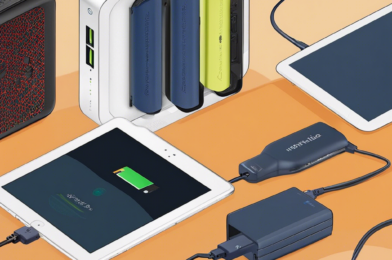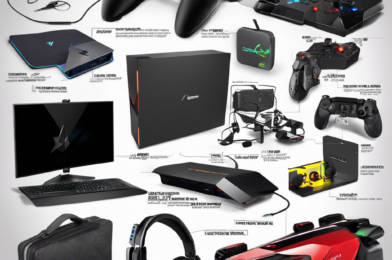As our homes get smarter, with devices from thermostats to light bulbs now connected to the internet, it’s important to consider the security implications. While these smart gadgets offer convenience and efficiency, they can also introduce new risks and vulnerabilities if not properly secured. So, how can you ensure your smart home is safe from potential cyber threats?
First and foremost, it’s crucial to practice good password hygiene. This means using strong, unique passwords for each device and account associated with your smart home system. Avoid common password pitfalls, such as using easily guessed words or personal information, and consider using a password manager to help create and store complex passwords. Regularly updating your passwords is also key to maintaining security.
Another important step is to keep your devices updated. Manufacturers of smart home devices frequently release software updates that include security patches to fix vulnerabilities. By enabling automatic updates where possible, you can ensure your devices are always running the latest and most secure software. If manual updates are required, make sure to check for updates on a regular basis.
Securing your Wi-Fi network is also essential to protecting your smart home. Use a strong password for your wireless network and consider enabling encryption, such as WPA2, to scramble the data sent over your network, making it unreadable to potential intruders. It is also recommended to disable remote access to your router and hide your SSID (the name of your Wi-Fi network) to make it more difficult for unauthorized individuals to connect to your network.
In addition to these fundamental security measures, there are also a number of smart security gadgets that can enhance the protection of your home. A smart security system can include features such as motion sensors, surveillance cameras, and smart locks, all of which can be monitored and controlled remotely via a mobile app. These systems provide real-time alerts and notifications, allowing you to keep a constant eye on your home, even when you’re not there.
One of the leading brands in this space is SimpliSafe, offering DIY wireless security systems that are easy to install and use. Their equipment is ultra-modern, and their monitoring plans are affordable and customizable. With SimpliSafe, you can opt for professional monitoring or self-monitoring via their mobile app, giving you total control over your home’s security.
Another great option is Abode, which provides similar functionality but with a slightly different approach. Abode offers no-contract professional monitoring, giving you the flexibility to subscribe month-to-month without being locked into long-term commitments. Their equipment is also compatible with various smart home platforms, allowing for seamless integration and voice control.
In addition to smart security systems, there are individual gadgets that can fortify your home’s security. Video doorbells, for instance, let you see who’s at your door and often come with two-way audio, allowing you to communicate with visitors remotely. Smart locks provide keyless entry, so you never have to worry about losing your keys, and they can automatically lock and unlock your doors based on your phone’s proximity.
When choosing smart security gadgets, it’s important to consider compatibility and integration. Look for devices that work seamlessly with your existing smart home ecosystem, whether it’s Amazon Alexa, Google Assistant, Apple HomeKit, or another platform. This ensures you can control and monitor everything from one central app, making it more convenient and efficient.
In conclusion, securing your smart home requires a combination of good cybersecurity practices and the right security gadgets. By implementing the measures outlined above, you can significantly reduce the risk of unauthorized access to your devices and network, ensuring your privacy and safety. As the capabilities of smart home technology continue to evolve, so too must our vigilance in keeping our digital lives secure.
Like all technology, smart homes are a double-edged sword, offering great benefits but also carrying potential risks. However, by being proactive and following best practices, you can enjoy the conveniences of a smart home while maintaining peace of mind knowing your digital fortress is secure.






